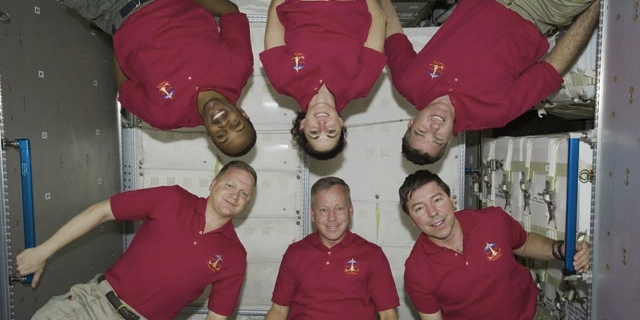On February 28 this year, Colonel Alvin Drew became the 200th man to walk in space. Currently in Dundee to receive an honorary degree from Abertay University and deliver a public lecture, the American astronaut told Jack McKeown about the future of space exploration.
Alvin Drew was a child when America took its first steps into space. Aged seven he watched, transfixed, as Neil Armstrong stood on the surface of the moon.
“That was over 40 years ago,” he smiles. “The space age really is in the past, we’re in the digital age now. In fact, there’s a bit of a disconnect between the older and the younger generation of scientists at NASA.
“The younger ones are saying ‘we need wireless technology in the shuttles’. And the older ones are saying ‘we got to the moon without any of that stuff’.”
Born in Washington DC, Alvin (48) joined the US Air Force in 1984 and fought in the first Gulf War.
He joined NASA in 2000. “It was a childhood dream,” he says. “But it was never one I expected to become reality. I’d filled out the application form it was like War and Peace and a couple of months later a little postcard came through my door.
Colonel Alvin Drew and other members of the Discovery Space Shuttle will be giving a public talk at Abertay University this Friday, July 8, at 10am. The talk is free and open to the public. For more information contact Gillian Bell at Gillian.Bell@abertay.ac.uk or 01382 308103.
“I thought it was a rejection letter, but it told me to report to NASA for an interview.”
Alvin spent the next five years training. “A lot of the time you’re waiting in a queue for the facilities. The pool we use for space walk training is about 40 feet deep and half the size of a football pitch. It costs about $1000 a minute to run.
“All of the simulators are incredibly realistic. We had to negotiate a shuttle into space and back to Earth again, and of course all sorts of things went wrong parts seized up, there were fires. When we successfully completed the mission, we felt about 11 feet tall.”
After years of training, Alvin left the Earth’s atmosphere for the first time in August 2007 aboard the space shuttle STS-118, on a 13-day mission to resupply the International Space Station.
“Because the International Space Station doesn’t self-generate, we have to bring up all the food, air, water and clothing.
Continued…
“We brought up 2.5 tons of equipment to the space station and remove the same amount of waste to return to Earth.”
This February, Alvin flew on the final voyage of the Space Shuttle Discovery, again to the International Space Station, where he became the 200th man to walk in space.
“For some reason I expected it to be dark,” he says. “But when I was standing there and the hatch opened it flooded with light. I was above the Amazon Jungle I could look down and see this great brown river and hundreds of tributaries.
“Our training is very realistic so everything felt strangely familiar. But you have to really focus because it’s easy to get distracted by passing over an aurora borealis or a shooting star.”
Surprisingly, Alvin plans to step away from space travel, temporarily at least, to help design the next generation of space shuttles. “I’ve been into space and now it feels like time to help build the vessels that the astronauts of tomorrow will fly in.
“If they’re going to go to Mars we need to build the shuttle that’s going to carry them there.”
Alvin is in Dundee all week to receive an honorary degree, teach children at Abertay Space School and deliver a public lecture.
“Meeting the kids at the Abertay Space School has been incredibly humbling.
“They are so smart and switched on. They made a board game showing what an astronaut does over a day. It took me years of training to learn and they have it nailed in an afternoon. It’s incredible.”
